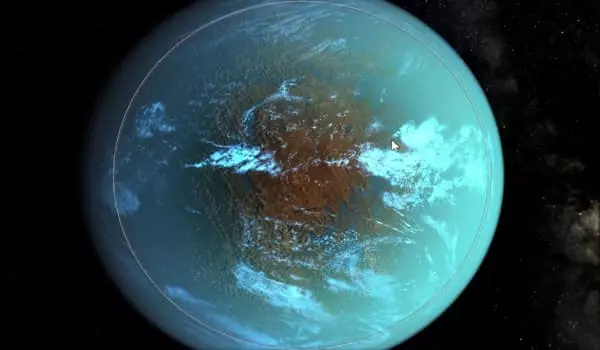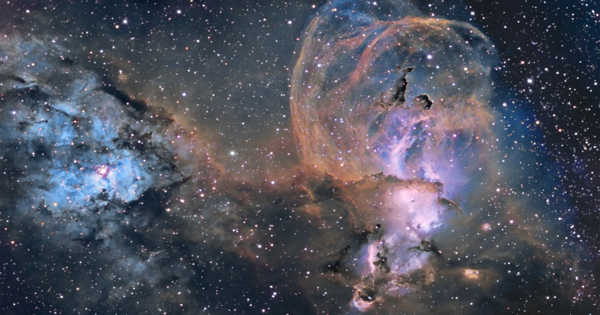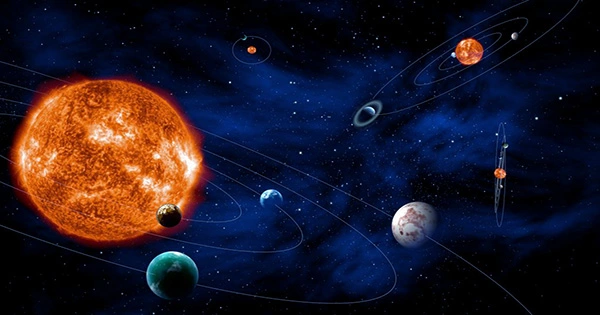LHS 1140 b is a massive, dense rocky planet orbiting within the red dwarf LHS 1140’s conservative habitable zone. It is an exoplanet that orbits an M-type star. LHS 1140 b, discovered in 2017 by the MEarth Project, is nearly 7 times the mass of Earth and more than 60% larger in radius, putting it in the Super-Earth category of planets. It has a mass of 6.38 Earths, takes 24.7 days to complete one orbit around its star, and is 0.0957 AU away from it. It is one of the densest planets discovered, with a density more than twice that of Earth and high surface gravity of about 2.41 times that of Earth.
LHS 1140 b orbits entirely within the star’s habitable zone and receives 41% of Earth’s incident flux. The planet is only 40 light-years away from its star and transits it, making it an excellent candidate for atmospheric studies using ground-based and/or space telescopes.
Host star
LHS 1140 b orbits LHS 1140, a very small red dwarf. It has a spectral type of M4.5V and is 0.146 times the mass and 0.186 times the radius of the Sun. LHS 1140 has a temperature of 3216 K and a luminosity of 0.00441 LS. It has been around for at least 5 billion years. In comparison, the Sun has one solar mass and radius, a temperature of 5778 K, one solar luminosity, is 4.5 billion years old and has the spectral type G2V.
Furthermore, LHS 1140 is a very inactive star, with no major flare events detected by the planet’s discovery team. LHS 1140, unlike most stars its size, has low activity and rotates every 130 days.

Characteristics
Mass and radius
LHS 1140 b was discovered using the radial velocity method (which determines the mass of a companion object) as well as transit photometry (which determines radius). As a result, LHS 1140 b is one of only a few potentially habitable exoplanets with a known mass and radius, the others being those orbiting TRAPPIST-1.
Orbit and temperature
LHS 1140 b’s orbit takes 24.737 days to complete, which is much faster than Earth’s year of 365 days. It has an orbital radius of 0.0875 AU, which is 8.75 percent of the distance between Earth and the Sun. While this is a close approach, the star LHS 1140 is so dim that the planet receives only 0.41 times the incident flux of Earth at this distance.
LHS 1140 b has an equilibrium temperature of 230 K (−43 °C; −46 °F) with an albedo of 0, compared to Earth’s at 255 K (−18 °C; −1 °F). If LHS 1140 b has the same albedo as Earth, the equilibrium temperature would be even lower, at 201 K (−72 °C; −98 °F). However, for an albedo of 0, LHS 1140 b would have a surface temperature greater than 266 K (−7 °C; −19 °F) with a greenhouse effect at least as strong as Earth’s.
Internal composition
The planet was initially thought to have an extremely high density of around 12.5 g/cm3, one of the highest ever observed for a rocky planet and more than twice the density of Earth, with an iron-nickel core accounting for up to 75% of the planet’s total mass. Later estimates yielded a lower density of 7.82+0.98 -0.88 g/cm3 and a lower core mass fraction of 45±10%. In comparison, the Earth’s core accounts for approximately 32.5 percent of its total mass.
According to formation models, the planet also contains about 4% water, implying that it could be an ocean world with an average depth of 779±650 km. Water vapor in the atmosphere of LHS 1140 b was detected in late 2020, though at a low signal-to-noise ratio.
Habitability
LHS 1140 b orbits near the outer edge of the habitable zone, which is a region around a star where temperatures are just right for liquid water to pool on the surfaces of orbiting planets if enough atmospheric pressure is present. LHS 1140 b has an equilibrium temperature of 230 K (−43 °C; −46 °F), which is as cold as the Earth’s polar regions. However, this is the calculated temperature, which takes into account the impact of a thick atmosphere. The surface temperature is about 266 K (−7 °C; −19 °F) with an Earth-like greenhouse effect, but because the planet is so massive, the greenhouse effect may be even higher. LHS 1140 b would have a comfortable surface temperature of 296 K (23 °C; 73 °F) at twice the GE of Earth.
















